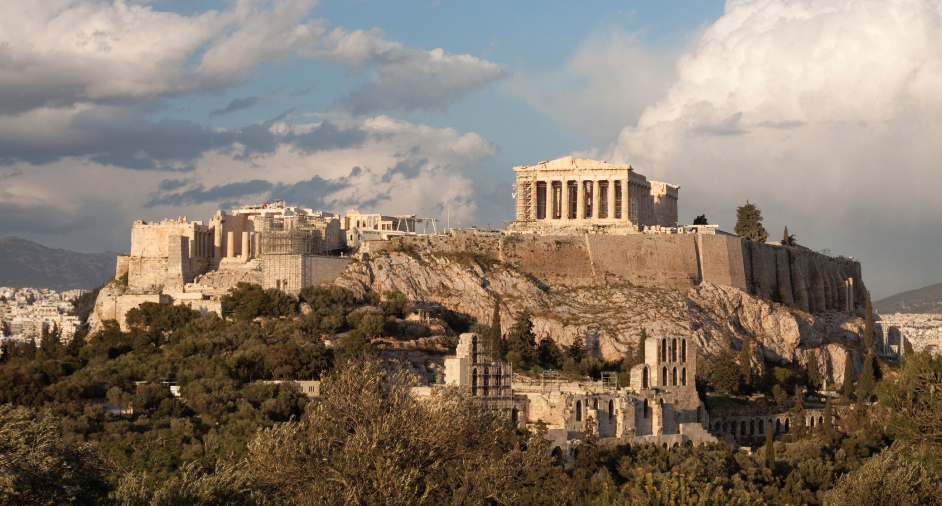Understanding Western Society
Printed Page 75
Athenian Arts in the Age of Pericles
In the midst of the warfare of the fifth century B.C.E., Pericles turned Athens into the showplace of Greece. He appropriated Delian League funds to pay for a huge building program. Workers erected temples and other buildings as patriotic memorials housing statues and carvings, often painted in bright colors, showing the gods in human form and celebrating the Greek victory over the Persians. Many of the temples were built on the high, rocky Acropolis that stood in the center of the city.
The Athenians normally hiked up the long approach to the Acropolis only for religious festivals, of which the most important and joyous was the Great Panathenaea, held every four years to honor the virgin goddess Athena and perhaps offer sacrifices to older deities as well. (See “Picturing the Past: The Acropolis of Athens.”) For this festival, Athenian citizens and legal noncitizen residents formed a huge procession to bring the statue of Athena in the Parthenon an exquisite robe, richly embroidered by the citizen women of Athens with mythological scenes. After the religious ceremonies, all the people joined in a feast.
> The Great Panathenaea Procession
| Led by an aristocratic young woman carrying an offering basket |
| Followed by other richly dressed women carrying gold or silver vessels |
| Young men on horseback came next, followed by older men carrying staffs |
| Toward the rear came other young men carrying large pitchers or leading sacrificial bulls |
The development of drama was tied to the religious festivals of the city, especially those celebrating the god of wine, Dionysus (see page 82). Drama was as rooted in the life of the polis as were the architecture and sculpture of the Acropolis. The polis sponsored the production of plays and required wealthy citizens to pay the expenses of their production. At the beginning of the year, dramatists submitted their plays to the chief archon of the polis. He chose those he considered best and assigned a theatrical troupe to each playwright. Many plays were highly controversial, containing overt political and social commentary, but the archons neither suppressed nor censored them.
Not surprisingly, given the incessant warfare, conflict was a constant element in Athenian drama, and playwrights used their art in attempts to portray, understand, and resolve life’s basic conflicts. The Athenian dramatists examined questions about the relationship between humans and the gods, the demands of society on the individual, and the nature of good and evil. Aeschylus (EHS-
Sophocles (SOF-
With Euripides (you-
Writers of comedy treated the affairs of the polis and its politicians bawdily and often coarsely. Even so, their plays were also performed at religious festivals. Best known are the comedies of Aristophanes (eh-

CONNECTIONS: What were the various functions of the Acropolis?